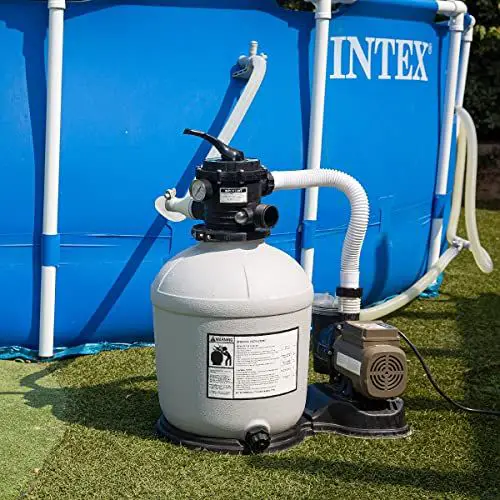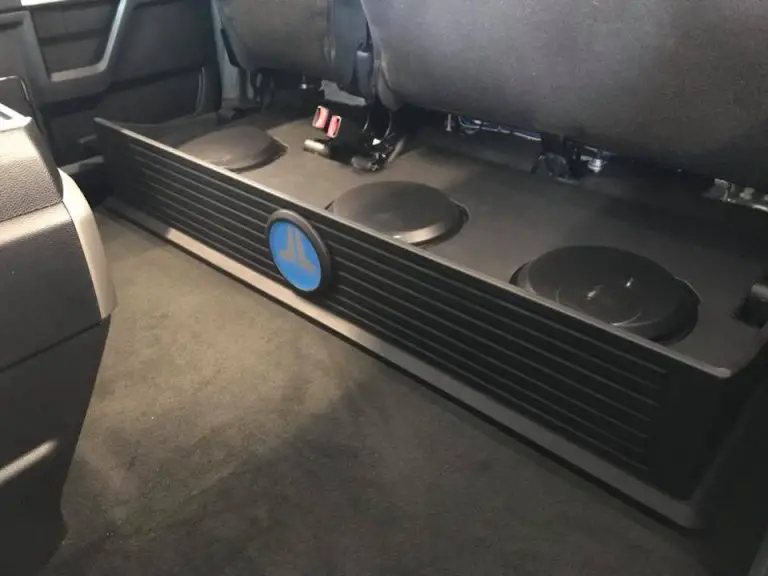Signs & Symptoms Of Bad FICM Relay: Details Guide 2023
The Fuel Injection Control Module (FICM) relay plays a crucial role in the functioning of a vehicle’s fuel injection system. As a vital component of diesel engines, the FICM relay is responsible for providing the necessary power to the FICM, which controls the fuel injectors. However, like any electrical component, the FICM relay can experience issues that may lead to its failure.
Being able to identify the symptoms of a failing FICM relay is essential for timely diagnosis and repair, preventing potential engine problems and costly repairs down the line. In this blog post, we will explore the common signs that indicate a bad FICM relay.
From engine performance issues to electrical glitches, understanding these symptoms will empower vehicle owners and diesel enthusiasts to take prompt action and seek professional assistance. By familiarizing yourself with the warning signs, you can ensure the reliability and longevity of your diesel engine. So, let’s delve into the world of FICM relays and uncover the telltale signs of their failure.
Signs Of A Faulty Ficm Relay
1. Engine Misfires
One of the primary symptoms of a bad FICM relay is engine misfires or rough idling. The fuel injectors may not receive the proper amount of voltage, leading to incomplete combustion and a noticeable decrease in engine performance.
2. Hard Starting or No Start
A failing FICM relay can cause difficulties during engine startup. You may experience extended cranking times, multiple attempts to start the engine, or even a complete failure to start. This indicates inadequate power supply to the fuel injectors.
3. Engine Stalling
A malfunctioning FICM relay can result in intermittent engine stalling. The loss of power to the fuel injectors can cause the engine to abruptly shut off while driving, leaving you stranded or requiring a restart.
4. Decreased Fuel Efficiency
If the FICM relay is not delivering the appropriate voltage to the fuel injectors, the engine may run rich or lean, affecting fuel efficiency. A noticeable decrease in mileage or the need for more frequent refueling could indicate a problem with the relay.
5. Check Engine Light
A faulty FICM relay can trigger the check engine light to illuminate on the dashboard. Retrieving the diagnostic trouble codes (DTCs) using a code reader can help pinpoint the specific issue related to the FICM relay.
6. Electrical Issues
FICM relay problems can also manifest as electrical glitches in the vehicle. This may include intermittent loss of power to various components, such as the radio, lights, or dashboard displays.
How To Detect A Bad Ficm Relay?
Detecting a bad FICM (Fuel Injection Control Module) relay can be done through a few diagnostic steps. Here’s how you can detect a faulty FICM relay:
Visual Inspection
Start by inspecting the FICM relay for any signs of physical damage, such as corrosion, melted plastic, or loose connections. Ensure that all the wiring connections are secure and free from debris.
Check for Power
Use a multimeter to test for power at the FICM relay. With the key in the “ON” position, probe the relay terminals to check for voltage. The specific terminals will vary depending on the vehicle make and model, so consult a reliable wiring diagram or service manual for the correct pins to test.
Test Relay Operation
Using the multimeter, set it to the continuity or resistance mode. Check for continuity between the appropriate relay terminals when the relay is energized (usually when the key is turned to the “START” or “ON” position). If there is no continuity, it may indicate a faulty relay.
Check Fuel Injector Operation
If you suspect a bad FICM relay, you can also check the fuel injector operation. With the engine running, use a stethoscope or long screwdriver to listen to the clicking sound of the fuel injectors. A lack of clicking from one or more injectors may suggest a problem with the FICM relay supplying power to those injectors.
Scan for Diagnostic Trouble Codes (DTCs)
Use an OBD-II scanner to retrieve any stored DTCs related to the FICM or fuel injectors. This can provide additional information and help pinpoint the issue.
How To React When You Found Out A Bad Ficm Relay?
When you discover a bad FICM (Fuel Injection Control Module) relay, it’s important to take appropriate actions to address the issue. Here’s what you should do:
1. Replace the Relay
The most common solution for a bad FICM relay is to replace it with a new one. Consult your vehicle’s service manual or a trusted mechanic to ensure you purchase the correct relay for your specific make and model.
2. Professional Diagnosis
If you’re unsure about the diagnosis or lack the necessary tools and expertise, it’s advisable to seek the assistance of a qualified mechanic or technician. They can perform a thorough inspection and confirm the issue before proceeding with any repairs or replacements.
3. Address Other Components
While replacing the FICM relay, it’s a good idea to inspect other related components, such as the wiring harnesses and connectors. Look for signs of damage, corrosion, or loose connections. Repair or replace any faulty components as necessary to ensure proper functionality.
4. Clear Error Codes
After resolving the FICM relay issue, it’s recommended to clear any stored error codes using an OBD-II scanner. This ensures that the vehicle’s onboard computer recognizes the repair and resets any related warning lights.
5. Test and Monitor
Once the new FICM relay is installed or repairs are completed, it’s important to test the vehicle to ensure proper functioning. Take the vehicle for a drive and pay attention to its performance, including engine response, idle smoothness, and any recurrence of previous symptoms. Monitor the vehicle over time to ensure the issue has been fully resolved.
Is Replacing Ficm Relay Is Expensive?
The cost of replacing a FICM (Fuel Injection Control Module) relay can vary depending on several factors. These factors include the make and model of your vehicle, the location of the relay, and whether you choose to do the replacement yourself or have it done by a professional.
In general, the cost of a FICM relay itself is not typically expensive. FICM relays are relatively affordable components. However, keep in mind that additional costs may be involved if you opt for professional installation. Labor charges can vary depending on the mechanic or repair shop.
If you choose to replace the FICM relay yourself, you can save on labor costs. However, it’s important to have the necessary tools and technical knowledge to ensure a proper installation.
For a more accurate estimate of the cost involved in replacing a FICM relay for your specific vehicle, it is recommended to contact local mechanics or repair shops for quotes. They can provide you with a breakdown of the costs involved, including the price of the relay and any associated labor charges.
Remember, it’s crucial to prioritize the reliability and performance of your vehicle, so consider seeking professional assistance if you are unsure about the replacement process or lack the necessary skills and tools.
How Often Should You Replace The Relay?
The frequency of replacing a relay, including the FICM (Fuel Injection Control Module) relay, largely depends on various factors, such as the specific vehicle, its age, and the relay’s overall condition. Relays are electrical components that can wear out over time, but they typically have a long lifespan.
In general, relays are designed to be durable and reliable, and they often last for many years without needing replacement. However, like any electrical component, they can fail due to various factors, including excessive heat, corrosion, or internal wear.
As a preventative measure, it’s a good idea to have the FICM relay inspected during routine maintenance or whenever you experience related symptoms, such as engine performance issues or starting difficulties. If the relay shows signs of damage or malfunction, it should be replaced promptly.
It’s important to refer to your vehicle’s manufacturer guidelines or consult the owner’s manual for specific recommendations on relay replacement intervals. Some manufacturers may suggest replacing relays as part of regular maintenance at certain mileage intervals or after a certain number of years.
Frequently Asked Questions
Q: What are the symptoms of a bad FICM relay?
A: The symptoms of a bad FICM (Fuel Injection Control Module) relay can vary, but some common signs include:
1. Engine misfires or rough idling.
2. Difficult starting or no start.
3. Loss of power and decreased engine performance.
4. Engine stalling or shutting off unexpectedly.
5. Illumination of the check engine light.
6. Electrical issues such as intermittent power loss to components.
Q: How can I determine if my FICM relay is the cause of these symptoms?
A: While the symptoms can point to a bad FICM relay, it’s essential to have a proper diagnosis by a qualified mechanic or technician. They can perform diagnostic tests using specialized tools and equipment to confirm if the FICM relay is faulty. Additionally, they can rule out other potential issues that may present similar symptoms.
Q: Can a bad FICM relay cause damage to the engine?
A: A failing FICM relay can potentially cause engine-related issues if left unaddressed. Engine misfires, lack of proper fuel delivery, and inconsistent power supply can lead to poor combustion and increased stress on engine components. Over time, this can result in reduced engine performance, increased fuel consumption, and potential damage to the engine if the issue is not resolved promptly.
Q: Can I drive my vehicle with a bad FICM relay?
A: It’s not recommended to drive your vehicle with a bad FICM relay. Continuing to drive with a faulty relay can lead to further engine problems and potential breakdowns. It’s advisable to have the issue addressed by a professional as soon as possible to prevent any further damage and ensure the reliable operation of your vehicle.
Q: How can a mechanic fix a bad FICM relay?
A: If the FICM relay is determined to be faulty, the mechanic will typically replace it with a new one. They will disconnect the old relay, remove it from its mounting location, and install the new relay. They will ensure proper connections and test the relay’s functionality to verify that the issue has been resolved.
Q: Can I replace the FICM relay myself?
A: If you have the necessary knowledge, experience, and tools, you can attempt to replace the FICM relay yourself. However, it’s important to follow proper safety precautions and consult the vehicle’s service manual or reliable sources for guidance. If you’re unsure or uncomfortable with the process, it’s best to seek professional assistance to ensure a correct and safe installation.



